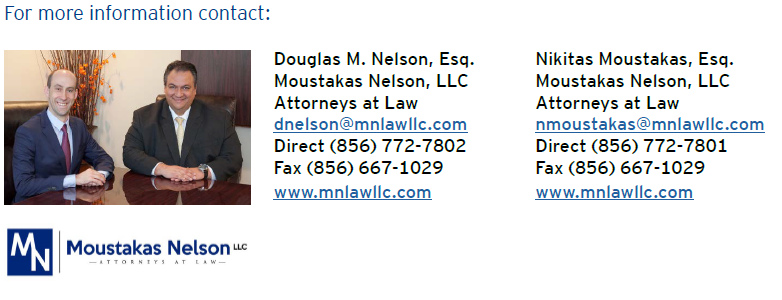 Imagine building a company that took years to gain momentum, thousands of hours of labor, sleepless nights, hundreds of thousands of dollars in costs, and second mortgages on houses to obtain bank financing. Through your hard work and risk, the company is now financially successful and has established itself as a prominent provider/seller of [insert good or service here].
Imagine building a company that took years to gain momentum, thousands of hours of labor, sleepless nights, hundreds of thousands of dollars in costs, and second mortgages on houses to obtain bank financing. Through your hard work and risk, the company is now financially successful and has established itself as a prominent provider/seller of [insert good or service here].
Unfortunately, your business did not a) adequately protect its intellectual property or b) conduct due diligence to ensure that the intellectual property it used was its own.
Now, a competitor’s product/service has a distinctly similar name, a different competitor is using a markedly similar logo, and yet another competitor poached your employee who did not have a non-disclosure agreement/non-competition agreement and is now utilizing your company’s trade secrets against you. To top it all off, your company just received a cease-and-desist letter from a corporation on the other side of the country alleging that the company’s slogan infringes on their trademark.
These are but a few of the many scenarios that could occur when a company does not take proactive legal measures to protect its goodwill and intellectual property, and was likewise using intellectual property haphazardly and without ensuring that there was no other owner of that intellectual property or that appropriate licensing was obtained.
In an era of global business and competition, the names, logos, and slogans of products and services, trade secrets, and other intellectual property often start off with little commercial value, but upon establishing goodwill for the business and/or creating a popular product or service, the value of a trademark can exponentially increase. For instance, Forbes estimated the value of the trademark for Google® at over $40 billion dollars, or more than one-quarter of the company’s overall value (at the time o f the Forbes publication).
However, the value of trademarks and other intellectual property is not limited only to the technology industry. The same is true for real estate entities, developers, and affiliated businesses. Think of notable brands in real estate and development and it is trademarked – i.e. PREIT®, Vornado®, Toll Brothers®, Ryan Homes®, Chicago Title Insurance Company® – and the list goes on.
As such, this blog provides a basic overview of the three most common types of intellectual property encountered by small and medium-sized businesses.
Intellectual Property – TRADEMARKS
Most basically, a trademark is a brand name. A trademark or service mark includes any word, name, symbol, device, or any combination, used or intended to be used, to identify and distinguish the goods/services of one seller/provider from those of others, and to indicate the source of the goods/services. For instance, the words Facebook® and Microsoft® are both trademarked, as is Apple Computers’ partially bitten apple logo, and both McDonalds’s golden arches and its slogan “I’m loving’ it.”
Because trademarks serve as an indicator of the mark owner’s goodwill, federal trademark law was established to protect the unsuspecting public from confusing products/services and to prevent against attempts by unscrupulous competitors to deceive the public.
Federal trademark rights may be established by either being the first to use a mark in interstate commerce (a Section 1(a) filing), or a pr ospective mark may be reserved prior to use by filing an in tent-to-use application (a Section 1(b) filing). Although the law generally provides that the first user of the mark is entitled to legal protection, with or without a federal trademark registration, federal registration provides significant additional value as it allows for the ability to recover profits, damages, and costs against infringers, national notice of ownership of the mark, the presumption of the validity of the mark, access to federal courts, as well as incontestability status for the mark after five years of federal registration.
State registrations are also available, but do not offer the national, comprehensive protection of a federal trademark registration. In light of the significant benefits of federally registering trademarks (names, logos, and slogans), the ever-increasing value of intellectual property and goodwill to all businesses, the need to protect and distinguish a mark from that of a competitor, and to avoid claims of infringement, businesses must look closely at protecting their brand through trademark protection and likewise ensure their marks are not infringing on those of another business.
Intellectual Property – COPYRIGHTS
Similarly, copyrights protect literary, musical, artistic, and dramatic works such as novels, photographs, movies, songs, etc. Copyrights can also protect creative works outside of the entertainment industry, including articles, blog postings, course materials, advertising materials, designs, graphs, charts, etc.
Unlike a trademark which requires federal filing, a work is copyrighted as soon as it is created. However, benefits are gained by registering a work with the United States Copyright Office. Promptly filing the copyright notice allows the holder to file a copyright infringement lawsuit, provides prima facie evidence of the validity of the copyright, and also provides the holder with the ability to obtain certain damages and attorney’s fees upon prevailing in a copyright infringement lawsuit.
Conversely, while not all businesses produce copyrightable works, businesses must remain cognizant of utilizing the works of others without appropriate rights or licensing. The most common scenario for a business being sued for inadvertently infringing copyrights are entertainment/restaurant establishments showing professional sports games without an appropriate commercial license or playing music without an ASCAP license. However, businesses can also face infringement actions for using copyrighted images on their website, reproducing a chart, or other seemingly innocuous activities.
In short, creators benefit from copyright protection and should register the works they have created, and business (or anyone else) using copyrighted material should be aware of the licensing requirements prior to using such works in a commercial environment.
Intellectual Property – TRADE SECRETS
Trade secrets, confidential information, proprietary information, and the like, encompass a wide variety of information that a business intends to keep secret and which those outside of the business are not afforded access. Most famously, McDonalds’s Big Mac sauce and the recipe for Coca-Cola are such types of information. However, more mundane information that almost all businesses utilize may qualify as a trade secret or otherwise necessitate protection from general release to the public. This includes customer/client lists, vendor/supplier lists, processes, know-how, business plans, marketing plans, information on prospects, customer/vendor habits and preferences, financial/financing information, creations, inventions, intellectual property (even if unregistered), etc.
Trade secrets are protected at both the state and federal levels, and many states utilize the Uniform Trade Secrets Act as a basis for defining a trade secret and cause of action thereunder. While not all proprietary or confidential information constitutes a trade secret under statute, a substantial amount will. A trade secret is often defined as information with economic value that is not generally known to other persons or is easily ascertainable, and the owner of the information has taken reasonable efforts to maintain its secrecy.
Given the immense value of intellectual property, businesses must take appropriate efforts to safeguard their trade secrets, both ensuring internally that employees do not take such information with them to another employer or otherwise use the information for their own benefit, and externally, so that such information is not otherwise obtained by a competitor.
Conversely, in hiring an employee or engaging a contractor, a business must ensure that the potential employee/contractor is not disclosing protected trade secrets of a prior employer which could drag the business into a lawsuit for trade secret misappropriation.
As such, businesses should identify all of their trade secrets and employ appropriate electronic and physical safeguards to protect such information. Likewise, businesses should actively utilize confidentiality agreements with anyone privy to the business’s trade secrets to further protect against disclosure.
CONCLUSION
As intellectual property is a key asset to many businesses in the information economy, and is nevertheless important for protection of any business’s goodwill, it is essential to proactively protect intellectual property through means of trademark, copyright, or trade secrets protections, and to likewise remain cognizant of the intellectual property of others’ so as not to be subject to an infringement action.



